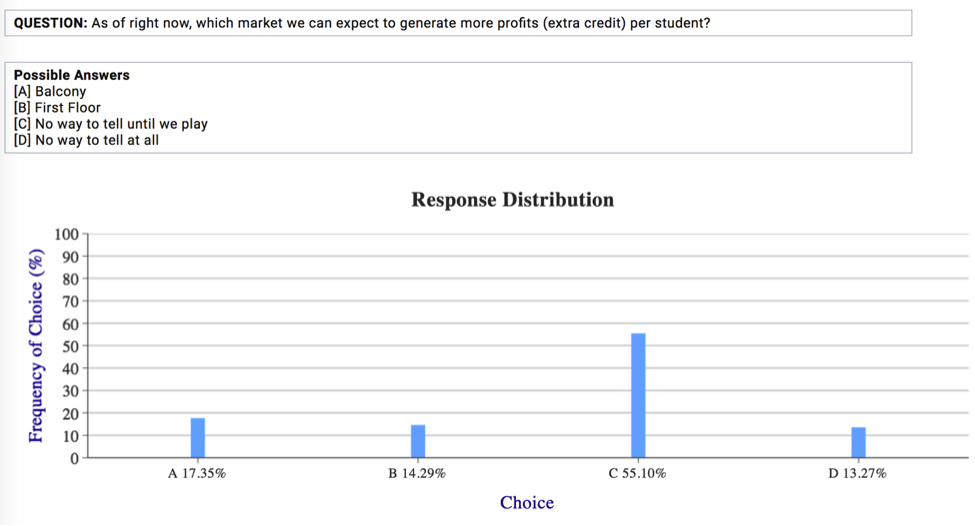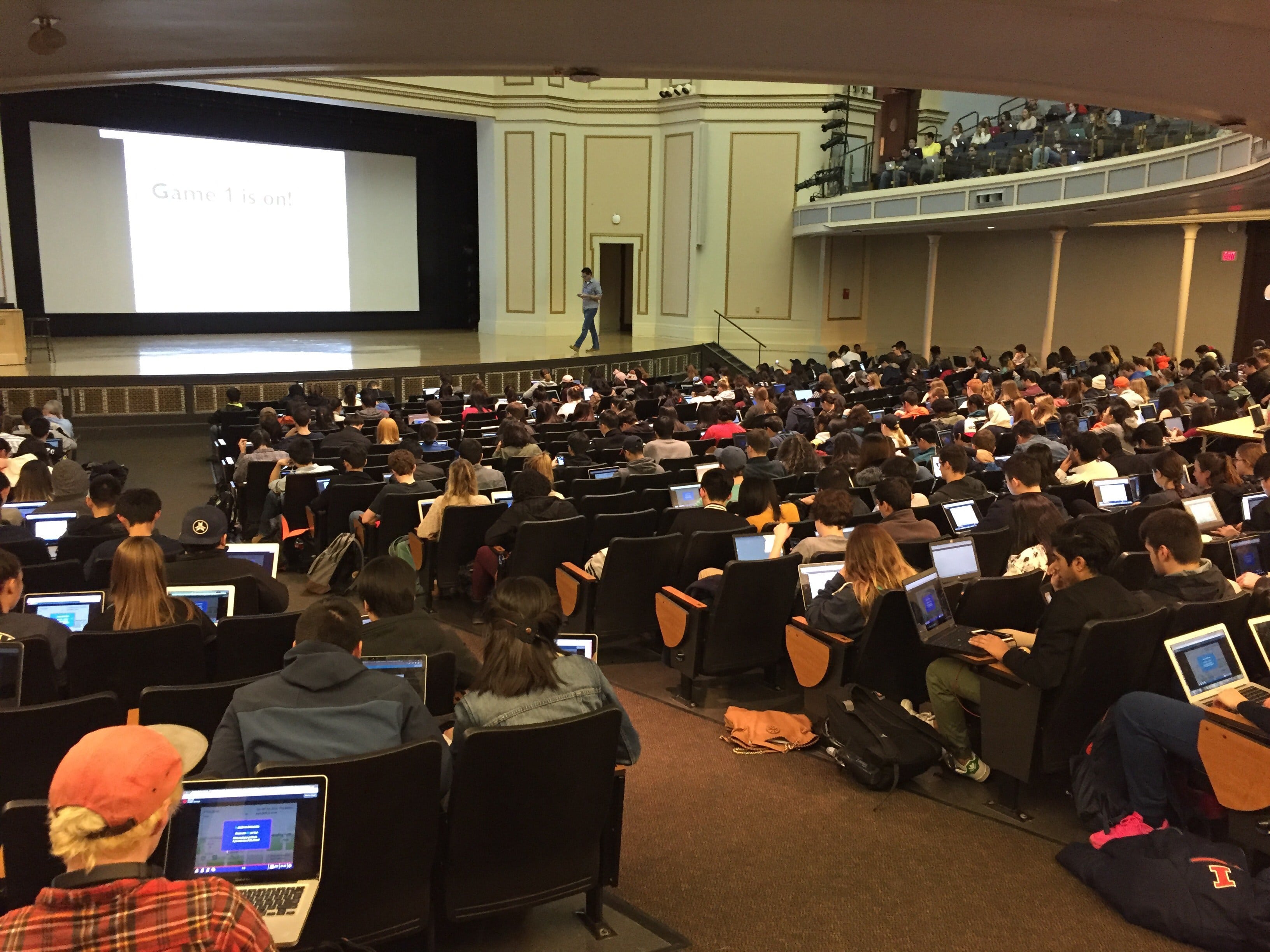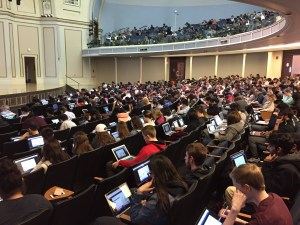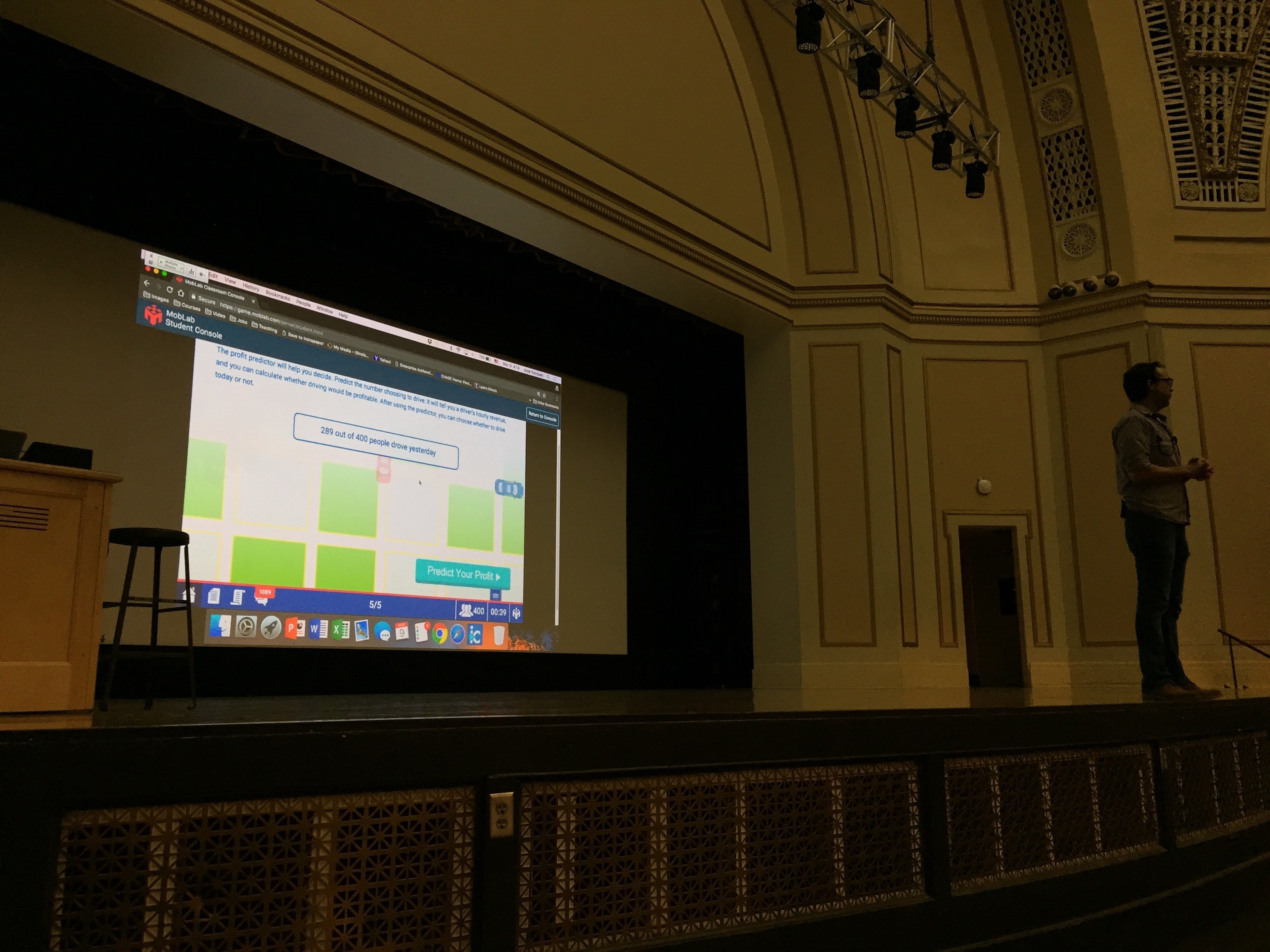The stage was set in Foellinger Auditorium, one of the most recognizable landmarks as well as the largest lecture hall on campus at the University of Illinois at Urbana-Champaign (UIUC). Hundreds of students streamed in, business as usual, finding their friends and favorite seats on either the main floor or the balcony. Unbeknownst to the 700+ students, they soon would be in a classroom experiment of labor market.

The instructor was Dr. Jose Vazquez-Cognet, a popular educator on campus and Coursera and a pioneer in the application of classroom technology. For over a decade, Dr.Vazquez has taught the largest Principles courses at UIUC, often engaging more than 900 students at a time. He rose to the challenge every year and used a multitude of methods: paper-and-pencil experiments (he brought thousands of pages of handouts to the class and wrote a paper about it!), real-time polling, and a multimedia solution, Flipit Economics, which he co-developed with another enterprising economist, Eric Chiang. This time, however, Dr. Vazquez had another plan.
Leading up to the day’s classroom activity, Dr. Vazquez had worked closely with MobLab’s economist, Doug Norton, on the Production, Entry and Exit game. In this game, students play the role of a rideshare driver, with each student having to first decide on whether to incur a fixed cost to work that day (i.e. whether to enter the ‘market’) and second, on how many hours to drive (there is increasing marginal cost from driving). When deciding to enter the market students should consider the level of competition. The more competition there is, in the form of other drivers deciding to enter the market, the less marginal revenue for every driver. The game helps students gain insights on profit maximization as a firm as well as long-run competitive equilibrium.
Simply having his students participate in the MobLab Production, Entry and Exit game was not enough for Dr. Vazquez. He had an interesting twist on the game based on his class environment:
“Most of my students sit on the main floor, while a couple of hundred always like to chill on the balcony. Normally, I’d like to get them all down to the main floor so they can see the slides and hear me better. However, in this case, I can take advantage of this seating layout for a natural experiment.
I can create two ridesharing markets, one called ‘Main Floor’ and the other called ‘Balcony’, and ask my students to join the corresponding market based on their seating location. Based on the density of the student participation in each market, what should happen?
We would have two labor markets with similar conditions, except one is packed more densely with potential ‘drivers’ than the other.”
Dr. Vazquez quietly watched as students flooded Foellinger Auditorium from all directions. As expected, the main floor was crowded with students, while the balcony was only sparsely occupied. Next Dr. Vazquez explained the Production, Entry and Exit game to his students, including that students would earn extra credit proportional to their profit as a driver. He asked students to access their MobLab accounts and join the corresponding experiment session based on where they were seated, ‘Balcony’ for those in the balcony, and ‘Main Floor’ for those in the lower level. Finally, before he began the game, he asked students to predict which market would earn drivers more profit on average (Figure 1).

Figure 1. Polling results of student predictions on profit comparison between the two ridesharing labor markets.
As the game started, you could literally hear a pin drop in the auditorium! We have visited hundreds of classrooms around the world, and it is always amazing to see that when we involve students in our lectures, even the most ardent YouTube and Facebook fans can spare a few minutes to learn.


After a practice session, the game was repeated for another five rounds. Data from the two markets were shown in the following table.

When the students saw the summary statistics on the screen, the murmurs grew louder. Dr. Vazquez then drove home the message: in light of what you see, would you like to go upstairs to the Balcony market? A natural experiment of two labor markets equilibrating unfolded right before the eyes of the students.
Technology alone cannot change education. How instructors apply it, in both traditional face-to-face and online classrooms, is just as important. In Dr. Vazquez’s class, he spent time to prepare the experiment, came up with a game plan for his classroom environment, and relentlessly focused on student engagement. By turning an almost unmanageable auditorium into a stimulating natural laboratory and leveraging technology, he left his students with a memorable learning experience.
We had a front-row seat to what teaching would look like in the future. Thank you, Dr. Vazquez!
 Vazquez-Cognet, Jose J., Running Classroom Experiments in a Large Enrollment Economics Course (August 28, 2006). Available at SSRN: http://dx.doi.org/10.2139/ssrn.927028.
Vazquez-Cognet, Jose J., Running Classroom Experiments in a Large Enrollment Economics Course (August 28, 2006). Available at SSRN: http://dx.doi.org/10.2139/ssrn.927028.
Ready to set up your own interactive economics experiments? Get in touch with our team! We are eager to partner with you on the best games and simulations for your classroom needs!

